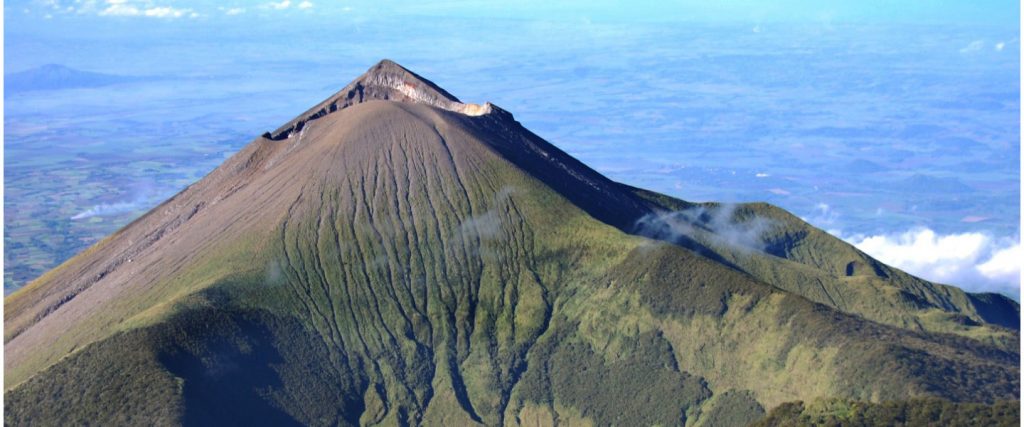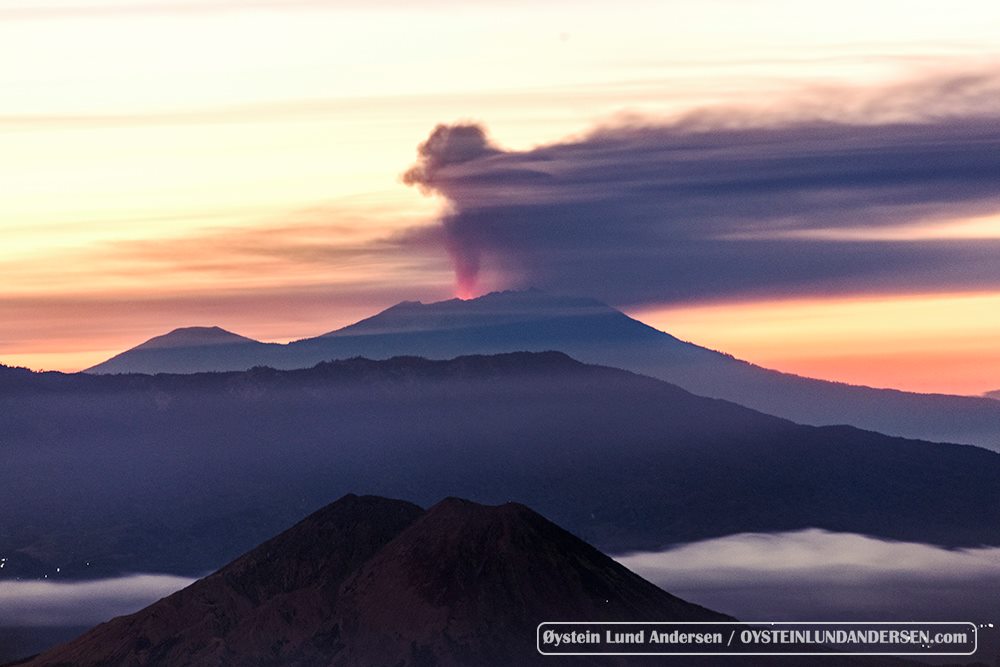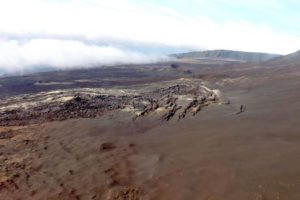July 26 , 2020.
Russia /Kuril Islands , Ebeko :
50.69 N, 156.01 E;
Elevation 3792 ft (1156 m)
Aviation Colour Code is ORANGE
A moderate eruptive activity of the volcano continues. Ash explosions up to 19,700 ft (6 km) a.s.l. could occur at any time. Ongoing activity could affect low-flying aircraft and airport of Severo-Kurilsk.
A moderate explosive eruption of the volcano continues. According to visual data by volcanologists from Severo-Kurilsk, explosions sent ash up to 3.5 km a.s.l. all week; ash clouds drifted to the different directions of the volcano. Satellite data showed a thermal anomaly over the volcano all week; an ash cloud 11×13 km in size drifted for 30 km to the south-east of the volcano on 22 July.
Source : Kvert.
Photo : L. Kotenko. IVS FEB RAS
Philippines , Kanlaon :
KANLAON VOLCANO BULLETIN: 26 July 2020 08:00 A.M.
In the past 24-hour observation period, Kanlaon Volcano’s monitoring network recorded ten (10) volcanic earthquakes that are mostly associated with rock fracturing processes beneath the edifice. Moderate emission of white steam-laden plumes that rose to 600 meters before drifting northwest and southwest was observed. Sulfur dioxide (SO2) emission was measured at an average of 1766 tonnes/day on 25 July 2020. Ground deformation data from continuous GPS measurements indicate a slight deflation of the lower and mid slopes since January 2020. However, short-term electronic tilt monitoring on the southeastern flanks recorded inflation on the lower to mid slopes that began on June 21, 2020. These parameters indicate hydrothermal or magmatic processes occurring beneath the edifice.
DOST-PHIVOLCS would like to remind the public that Kanlaon Volcano is at Alert Level 1, which means that it is at an abnormal condition and has entered a period of unrest. The local government units and the public are strongly reminded that entry into the 4-kilometer radius Permanent Danger Zone (PDZ) must be strictly prohibited due to the further possibilities of sudden and hazardous steam-driven or phreatic eruptions. Civil aviation authorities must also advise pilots to avoid flying close to the volcano’s summit as ejecta from any sudden phreatic eruption can be hazardous to aircraft. DOST-PHIVOLCS is closely monitoring Kanlaon Volcano’s activity and any new development will be relayed to all concerned.
Source et photo : Phivolcs.
Indonesia , Raung :
Since July 16, 2020, the number of earthquakes recorded on the G. Raung has increased, followed by the appearance of other types of volcanic earthquakes (tremor and eruption), and accompanied by changes in the height and color of the gas / ash emission column. Then since July 19, 2020, the activity level of G. Raung has been raised to level II (WASPADA).
The volcano is clearly visible until it is covered in fog. The smoke from the crater is gray with low to thick intensity about 100 to 200 meters above the summit. The weather is sunny to cloudy, the wind is weak towards the south.
According to the seismographs of July 25, 2020, it was recorded:
33 emission / eruption earthquakes
288 non-harmonic tremors
2 distant tectonic earthquakes.
Recommendation:
The public and visitors / tourists are not allowed to descend to the summit crater and camp around the peak / caldera rim / in the G. Raung crater and should not enter within a radius of 2 km around the crater because the volcanic gases coming out of the crater are dangerous for human life.
VONA: The latest VONA message sent color code ORANGE, published on July 16, 2019 at 3:37 p.m. WIB. Volcanic ash was not observed.
Source : PVMBG.
Photo : Oystein Lund Andersen .
Guatemala , Fuego :
Atmospheric conditions: Clear weather.
Wind: North at 8 k / h.
Precipitation: 38.5 mm.
https://www.facebook.com/100041907843842/videos/321364965937096/
Activity:
Without changing the eruptive pattern, weak to moderate explosions are observed in a range of 8 to 12 per hour, accompanied by columns of ash at a height of 4,700 meters above sea level (15,419 feet) dispersing towards the ‘West for a distance of about 15 kilometers. Some explosions generate rumblings and shock waves that vibrate the roofs and windows of houses in communities 8 kilometers from the crater. At night and early in the morning, incandescent pulses were observed 100 and 200 meters above the crater, as well as boulder avalanches in the ravines, Seca, Ceniza, Trinidad, Las Lajas and Honda, some reaching the vegetation. Sounds similar to those of train locomotives were heard during 3 and 5 minute intervals. Ash particles fall, reported on the villages of Panimache, Morelia, Santa Sofia, Palo Verde, El Porvenir and San Pedro Yepocapa.
Source : Insivumeh.
Video : Setiawan





